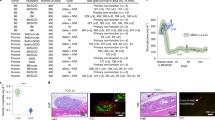Abstract
This review summarizes the recent results of immunoioslated islet allo- and xenotransplants, especially in large animal species, and presents certain issues that would be important for the advancement of this technology toward clinical application. To date, the best results have been obtained with alginate microcapsules in both allo- and xenogeneic (porcine) islet transplantation in the spontaneously diabetic dogs and monkeys. Reversal of diabetes was also achieved in mice with cryopreserved, microencapsulated rat islets. However, results with these microcapsules have been highly variable and inconsistent from one laboratory to another. The causes of these discrepancies are multiple, but not totally understood. Immunoisolation devices have been investigated as an alternate approach to house a large number of islets in a space constructed by membranes of a defined pore size. Vascularized bioartificial devices were among the few cases that obtained long-term allo- and xenogeneic islet survival in totally pancreatectomized dogs. Thrombosis and associated problems were the major cause of failure with these devices. Diffusion chambers that have no vascular connection have been tested successfully in rodents, but no report has been available in large animal species. We have learned many important lessons and made considerable progress in islet immunoisolation. However, immunoisolated islet transplants have been only minimally successful in large animal models, and such technologies must be improved to achieve consistent success in large animal models prior to clinical trials. This will requires strict quality control of the islets, the membrane material, and the device construction. The membrane pore size that allows the permeation of molecules necessary for islet survival and function also permits the entry of cytokines, oxygen-radicals, and other small-size inflammatory products. Thus, the key to success appears to be to minimize inflammatory reactions generated by immuneisolation devices/capsules.
Similar content being viewed by others
Author information
Authors and Affiliations
Additional information
Received: December 8, 1999 / Accepted: February 5, 2000
About this article
Cite this article
Mullen, Y., Maruyama, M. & Smith, C. Current progress and perspectives in immunoisolated islet transplantation. J Hep Bil Pancr Surg 7, 347–357 (2000). https://doi.org/10.1007/s005340070028
Issue Date:
DOI: https://doi.org/10.1007/s005340070028




